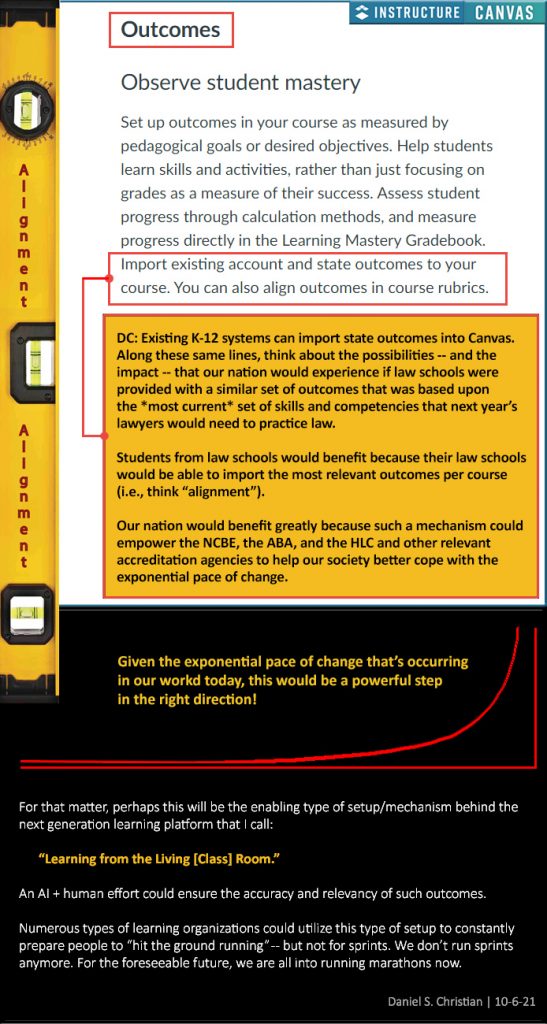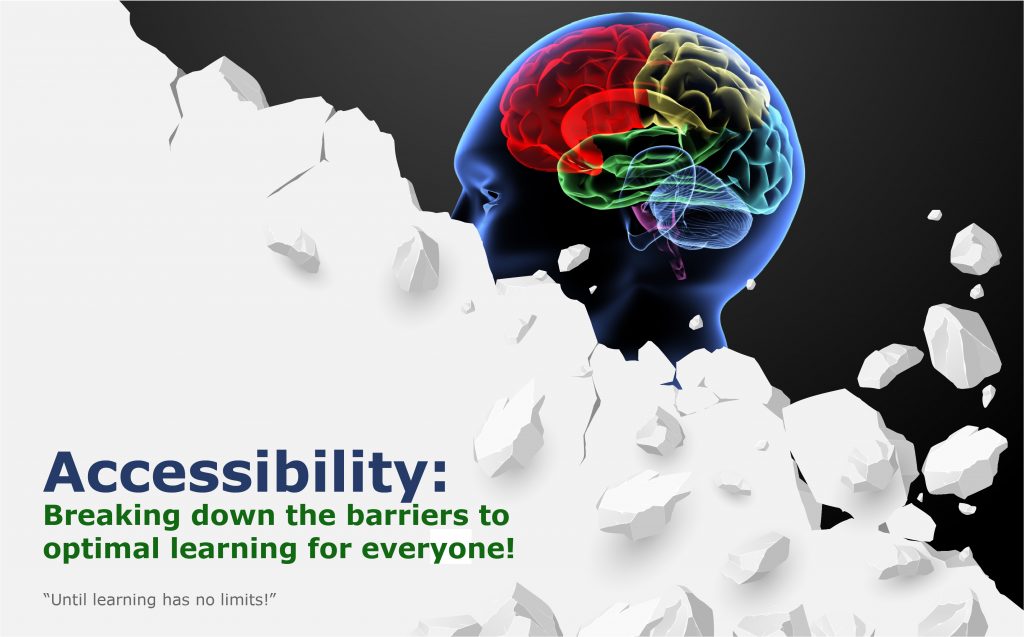









Lights, Camera, Action! 5 Ideas for Student-Created Video Assignments — from barbihoneycutt.com by Barbi Honeycutt, Ph.D.
Excerpt:
Here are 5 ideas for student-created videos. I hope these ideas inspire you to mix up your assignments and assessments to increase student engagement and improve learning.
Judith [Dutill] mentioned that students’ knowledge of and comfort with communicating by video is a 21st century skill that we need to prepare them for.
From DSC:
You might be interested in reviewing one or more of the items out at Faculty Focus Live Podcasts.
Some example podcasts:
Caring for Students Playbook: Six Recommendations — from by Every Learner Everywhere in partnership with Online Learning Consortium (OLC) & Achieving the Dream
Table of C0ntents:
Also see:
3 Education Trends to Watch for the Upcoming School Year — from techlearning.com by Dr. Kecia Ray
Education trends in the year ahead include micro lessons, integrated whole classrooms, and reconsidering assessments
Excerpts:
The study was conducted at the university level but can apply to all levels K-20. Polling, response apps, small group instruction, collaborative activities, and peer instruction are some of the effective strategies identified in active learning.
Thinking about classroom design as having all the necessary technologies — interactive panels, individual devices for students and teachers, integrated software, integrated hardware solutions, accessible high quality digital content, interactive applications — along with a teacher who is well equipped to design classes that incorporate effective instructional strategies will yield high performing students, no matter who you are teaching!
From DSC:
I read an interesting article out at Inside Higher Ed from the other day:
Rejecting Remote Proctoring — from insidehighered.com by Elizabeth Redden
University of Michigan Dearborn made a universitywide decision to reject remote proctoring and invest in faculty development instead.
At the same time many other colleges were considering whether to employ the technologies, UM Dearborn’s leadership made the choice that eproctoring was unacceptably invasive, at least when it comes to students who hadn’t signed up for that kind of surveillance.
From DSC:
Lower stakes assessments offered with a greater variety of ways to check for mastery. That fits in with what I’m reading about re: the topic of Universal Design for Learning (UDL), which offers:
It also reduces anxiety — something that’s needed in this period of time.
Rebooting the final exam — from roberttalbert.medium.com by Robert Talbert
Excerpts:
It’s probably better not to give final exams at all, but if you must, then here are some alternative approaches that do more to help students.
Here are some ideas for what your students might do on a final exam like this.
NJ High School Adds New Recording Studio to Learning Spaces — from spaces4learning.com by Matt Jones
Excerpt:
A career and technical high school in New Jersey has added new professional recording gear to one of its teaching spaces. County Prep High School, part of Hudson County Schools of Technology, added hardware from Solid State Logic (SSL), a UK-based company that manufactures analog and digital audio consoles for music and audio production. Students in the music and audio technology program learn how to write their own songs and produce their own music. The senior project involves putting a label together and releasing songs.
The new studio at County Prep High School features professional equipment from Solid State Logic.
Source: Solid State Logic
Also see:
Addendum on 4/1/21:
Self-Assessment (emphasis DSC)
Turn each of your learning outcomes or objectives into a question. Then, ask each student to self-score how confident they feel about being able to demonstrate that outcome or task.
Example:
Learning outcome: Students will be able to compare bacteria vs. viruses.
Change it to a question: How confident are you in comparing bacteria vs. viruses based on today’s lesson?
Now ask students to score their confidence or ability to do this outcome using a simple scale such as: “1 = I’m not confident that I can do it” to “5 = I am very confident that I can do it.”
If equity is a priority, UDL is a must — from cultofpedagogy.com by Katie Novak
Once you identify the firm goal, ask yourself, “Based on the variability in my class, what barriers may prevent learners from working toward that goal and how can I eliminate those barriers through design?”
Excerpt:
When we design the same learning pathways for all learners, we might tell ourselves we are being fair, but in fact, single pathways are exclusionary. Beverly Daniel Tatum, author of the critically acclaimed book, Why Are All The Black Kids Sitting Together in the Cafeteria? And Other Conversations About Race, challenges us to focus on impact over intentions. It may not be our intent to exclude our learners, but the reality is that many students do not have opportunities to learn at high levels or to access curriculum and instruction that is accessible, engaging, culturally sustaining, and linguistically appropriate.
Luckily, there is a framework that rejects these one-size-fits-all solutions and empowers educators to proactively design learning experiences so all students can increase their brainpower and accelerate and own their learning. The framework is Universal Design for Learning (UDL).
UDL is a framework for designing learning experiences so students have options for how they learn, what materials they use, and how they demonstrate their learning.
From DSC:
I put together this graphic as I’m working on a Module (for Canvas) to address the topic of accessibility:

4 Tips for Offering Online Exams — from techlearning.com by Erik Ofgang
The University of New England, Australia has given more than 40,000 online exams over the past year, here’s what they’ve learned
Excerpt (emphasis DSC):
UNE administrators are considering doing away with an exam period because it initially was created for logistical purposes. “We needed to have all the exam venues booked, and the desks and chairs moved in, and the supervisors ready in the papers there,” Day says. “Now we are able to hold exams, anywhere, anytime, any day. So why do we need an exam period? It’s allowing structural changes to the academic calendar, it gives us a few weeks per teaching period back for teaching, perhaps.”
Day says you can also incorporate elements of video and website exploration into your exam, opening up both the type of questions you ask and the type of answers students can provide.
Rethink the Exam Structure
Switching from paper to online exams is an opportunity for instructors to reexamine the exams themselves, Day says. “It requires you to question why you hold exams, why you hold exams when you do, and how you hold exams.”
We want students to be creative, but how do we assess this? — from spencerauthor.com by John Spencer
Excerpt:
We know that creativity is vital for student learning. We also know that we tend to value the things we assess. However, when we assess creativity, we can unwittingly cause students to become risk-averse. So, how do we assess creativity in a way that encourages students to become more creative?
From DSC:
For me the Socratic method is still a question mark, in terms of effectiveness. (I suppose it depends on who is yielding the tool and how it’s being utilized/implemented.)
But you have one student — often standing up and/or in the spotlight — who is being drilled on something. That student could be calm and collected, and their cognitive processing could actually get a boost from the adrenaline.
But there are other students who dread being called upon in such a public — sometimes competitive — setting. Their cognitive processing could shut down or become greatly diminished.
Also, the professor is working with one student at a time — hopefully the other students are trying to address each subsequent question, but some students may tune out once they know it’s not their turn in the spotlight.
So I was wondering…could the Socratic method be used with each student at the same time? Could a polling-like tool be used in real-time to guide the discussion?
For example, a professor could start out with a pre-created poll and ask the question of all students. Then they could glance through the responses and even scan for some keywords (using their voice to drive the system and/or using a Ctrl+F / Command+F type of thing).
Then in real-time / on-the-fly, could the professor use their voice to create another poll/question — again for each student to answer — based on one of the responses? Again, each student must answer the follow up question(s).
Are there any vendors out there working on something like this? Or have you tested the effectiveness of something like this?
Vendors: Can you help us create a voice-driven interface to offer the Socratic method to everyone to see if and how it would work? (Like a Mentimeter type of product on steroids…er, rather, using an AI-driven backend.)
Teachers, trainers, pastors, presenters could also benefit from something like this — as it could engage numerous people at once.
#Participation #Engagement #Assessment #Reasoning #CriticalThinking #CommunicationSkills #ThinkingOnOnesFeet #OnlineLearning #Face-to-Face #BlendedLearning #HybridLearning
Could such a method be used in language-related classes as well? In online-based tutoring?
Top 5 legal technology stories of 2020 — from abajournal.com by Nicole Black
Excerpts: